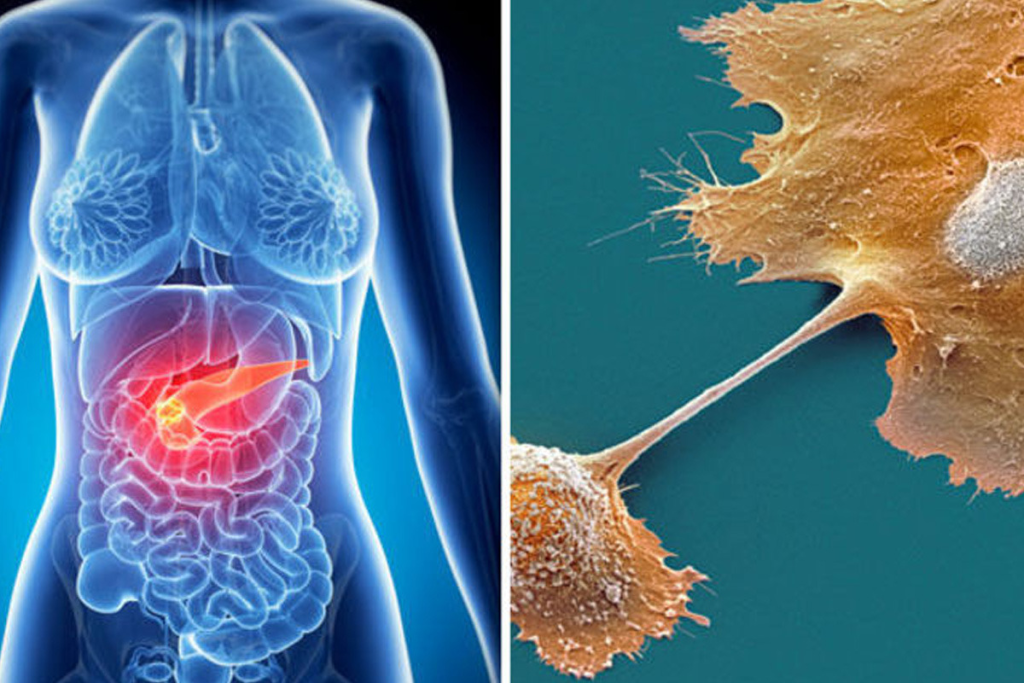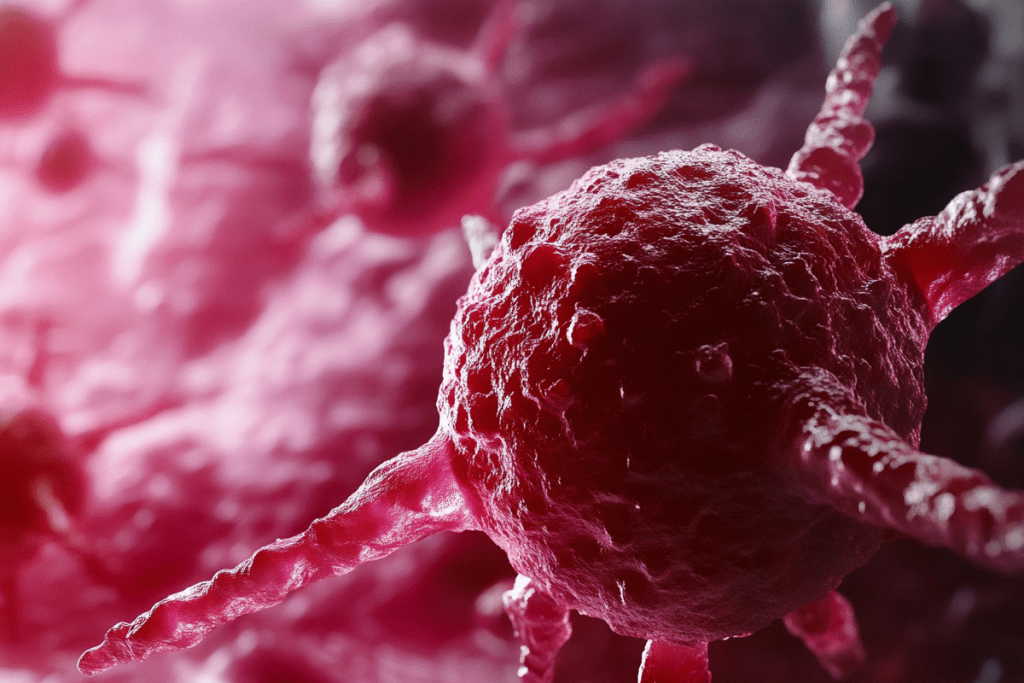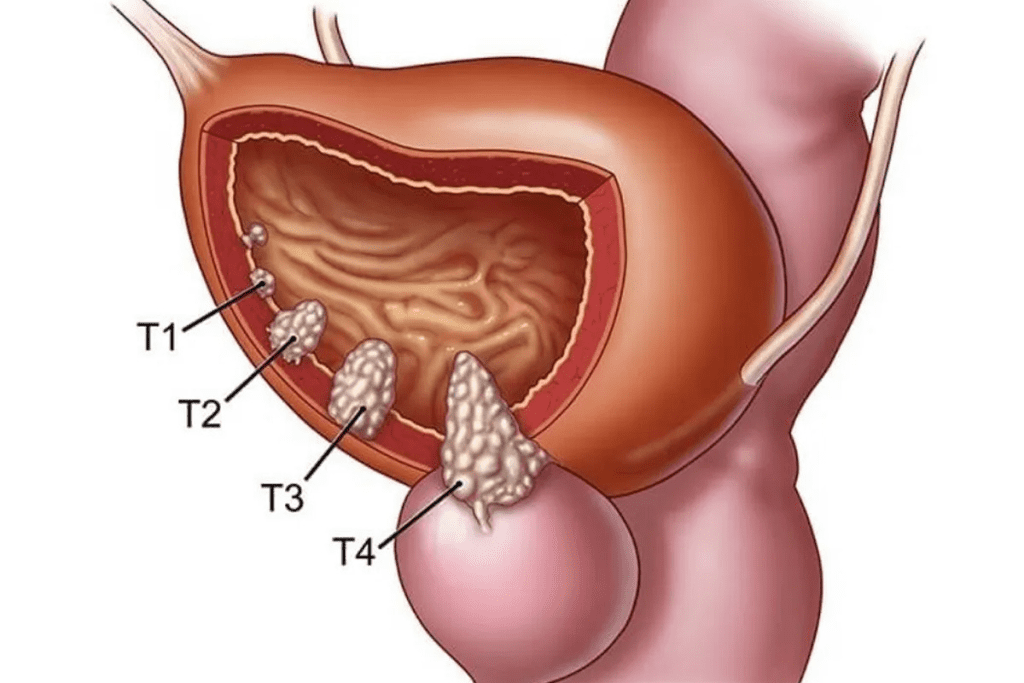Last Updated on November 25, 2025 by

Early-stage bladder cancer is often highly treatable. This is true when it’s confined to the bladder lining. At this stage, which includes stages Ta, Tis, and I, the cancer is typically non-muscle-invasive. This offers a favorable prognosis. What stage of bladder cancer is most treatable? Learn the crucial, powerful impact of early diagnosis on your bladder cancer treatment options and outcomes.
We stress the importance of early detection and personalized care. This approach improves patient outcomes. Advanced therapies like transurethral resection of bladder tumor (TURBT) and intravesical therapy have shown high success rates in treating early-stage bladder cancer.
Knowing the stages of bladder cancer is key to planning treatment. Staging bladder cancer is complex. It shows how far the cancer has spread, guiding treatment choices.
The TNM system is a common way to classify bladder cancer. It looks at three main things: the tumor size (T), lymph node involvement (N), and metastasis (M). This system helps understand how the cancer has grown.
We use the TNM system to sort bladder cancer into stages. These stages range from non-invasive to invasive. The TNM system is important. It helps doctors predict outcomes and pick the best treatment.

Bladder cancer is divided into non-muscle invasive (NMIBC) and muscle-invasive (MIBC). NMIBC includes stages Ta, Tis, and T1. These cancers are in the bladder lining or lamina propria. Patients with stage Ta have a 98% five-year cancer-specific survival rate.
MIBC, on the other hand, includes stages T2, T3, and T4. These cancers have invaded the detrusor muscle or beyond. MIBC needs more aggressive treatments like radical cystectomy or chemoradiation. Knowing if the cancer is NMIBC or MIBC is key to choosing the right treatment.
Accurate staging is essential for effective treatment planning. The difference between NMIBC and MIBC is critical. It affects the patient’s prognosis and quality of life.
Stages Ta, Tis, and I bladder cancer are the most treatable. They have high survival rates when treated right. At these stages, the cancer is either non-invasive or hasn’t deeply invaded the bladder wall. This makes it easier to treat.
Stage Ta bladder cancer is non-invasive and grows on the bladder’s inner surface. It looks like fingers and is called papillary. People diagnosed at this stage have a 98% five-year survival rate. This shows how important early treatment is.
We treat Stage Ta with Transurethral Resection of Bladder Tumor (TURBT). This removes the tumor from the bladder wall. Sometimes, we also use intravesical therapy to stop it from coming back.
Stage Tis is a flat, high-grade tumor on the bladder’s inner lining. It’s non-invasive but can turn into muscle-invasive cancer if not treated. With the right treatment, patients with Tis have a 90% five-year survival rate.
We treat Stage Tis with BCG immunotherapy. This is a treatment where we put a solution into the bladder. It helps the immune system fight cancer cells.
Stage I bladder cancer means the cancer has grown into the layer beneath the bladder’s lining. But it hasn’t reached the muscle layer. This is considered early invasive cancer. With the right treatment, the five-year survival rate for Stage I bladder cancer is around 85-90%.
We treat Stage I with a mix of TURBT and intravesical therapy. This might include BCG immunotherapy or chemotherapy. We aim to remove the tumor and stop it from getting worse.

At Liv Hospital, we focus on personalized treatment plans. We tailor our approach to each patient’s condition and health. This helps us achieve the best treatment results.
Bladder cancer survival rates change a lot based on the stage at diagnosis. It’s key for patients and doctors to know these stats to choose the best treatments.
People with Stage Ta bladder cancer, a non-invasive type, have a 98% five-year survival rate. This high rate is thanks to the good treatments available for this stage.
Stage Tis, or carcinoma in situ, has a 90% five-year survival rate. This stage is serious and needs quick treatment to stop it from getting worse.
Stage I bladder cancer has an 85% survival rate at five years. This is much better than the later stages. Finding and treating it early is key to these good results.
For advanced stages like stage IV, survival rates drop to about 7-9% at five years. This shows how vital early detection and treatment are.
At Liv Hospital, we aim to improve survival rates and patient results. Our team creates custom treatment plans for each patient’s needs.
Effective treatment for bladder cancer needs a detailed plan. This plan depends on the cancer’s stage, grade, and the patient’s health. At Liv Hospital, we make treatment plans that fit each patient’s needs. This ensures the best results for them.
TURBT is a key treatment for non-muscle invasive bladder cancer. It removes the tumor from the bladder wall. This helps in accurately checking the cancer’s stage and grade. After TURBT, intravesical therapy is often used to stop the cancer from coming back.
Intravesical therapy puts medicine directly into the bladder. It’s good for treating non-muscle invasive bladder cancer and stopping it from coming back. Chemotherapy and immunotherapy are common treatments used.
BCG (Bacillus Calmette-Guérin) immunotherapy is very effective for non-muscle invasive bladder cancer. It boosts the immune system to fight cancer cells. More than 70% of patients see their cancer go into remission after BCG treatment. We use BCG immunotherapy in our treatment plans, giving patients a good chance of getting better.
At Liv Hospital, our team works together to give personalized care. We make sure each patient gets the right treatment for their condition. Our dedication to top-notch healthcare shows in our treatment results and patient happiness.
It’s important to spot bladder cancer early for better treatment and survival. Early-stage bladder cancer might not show clear signs. But knowing about changes in how you pee or other signs can help you get medical help.
At Stage I, bladder cancer symptoms can be tricky to spot. You might see hematuria (blood in the urine), frequent urination, or dysuria (painful urination). These signs can come and go, and their strength can change.
Hematuria is a big warning sign. It means blood in your pee, which can be tiny or big enough to see. It’s often the first thing that makes people go see a doctor.
If you notice any of these symptoms, get medical help right away. Seeing a doctor early can help catch the cancer sooner and treat it better. Don’t wait if you see:
At Liv Hospital, we focus on finding bladder cancer early. We use many tests to catch it early. These include:
These tests help us find bladder cancer early. Then, we can make a treatment plan just for you.
Advanced bladder cancer is tough to treat because it grows fast. The treatments get more complicated and need a team effort.
Stage II bladder cancer treatment mixes different methods. Radical cystectomy is a surgery that might be paired with neoadjuvant or adjuvant chemotherapy. This helps kill any cancer cells left behind. The five-year survival rate shows how important a tailored treatment plan is.
Every patient is different, and results can vary a lot. It’s key to talk about the pros and cons of each treatment with a doctor.
Stages III and IV bladder cancer treatments are harder. Advanced bladder cancer needs stronger treatments like chemotherapy, radiation, and sometimes surgery. The aim is to stop the cancer, ease symptoms, and improve life quality.
We use a detailed care plan at our place, with the newest treatments for advanced bladder cancer. This includes immunotherapy and targeted therapy for some patients.
Advanced bladder cancer is hard to treat because it spreads to other parts of the body. Stage IV bladder cancer survival rates are much lower than those of earlier stages. This shows why catching it early is so important.
We’re dedicated to giving personalized care for advanced bladder cancer patients. By using the latest treatments and a team approach, we aim to achieve better outcomes and improve life quality for our patients.
At Liv Hospital, we think personalized care is key to treating bladder cancer well. Our team of specialists works together to give our patients the best care. This team approach helps us find the right treatment for each patient.
Our specialized care teams include urologists, oncologists, and radiologists. They all have lots of experience with bladder cancer. Together, they create tailored treatment plans for each patient.
We know every patient is different. So, we make treatment plans that fit each person’s needs. This personalized approach helps us give the best treatment for each patient.
Liv Hospital follows international standards in bladder cancer care. This means our patients get top-notch treatment. We always update our care with the latest research to improve patient results.
By mixing personalized care with multidisciplinary expertise, we aim to offer the best treatment options. Our goal is to help our patients have the best chance of a successful outcome.
Early detection and treatment greatly improve survival chances for bladder cancer patients. When caught early, bladder cancer can be cured. Treatments like Transurethral Resection of Bladder Tumor (TURBT) and BCG immunotherapy are effective.
At Liv Hospital, we focus on giving top-notch, personalized care. Our team is skilled in delivering effective treatments, including BCG immunotherapy. We aim for the best results for our patients.
Recognizing symptoms early and getting tested quickly can lead to better treatments. This can greatly improve a patient’s chances of recovery. We stress the need for early diagnosis and treatment to fight bladder cancer effectively.
The most treatable stages of bladder cancer are Ta, Tis, and I. These are non-muscle invasive. They have high survival rates with treatments like TURBT and intravesical therapy.
Bladder cancer is staged using the TNM system. It looks at the tumor’s size, lymph node involvement, and if it has spread.
Non-muscle invasive bladder cancer (NMIBC) includes stages Ta, Tis, and I. It’s treated with TURBT and intravesical therapy. Muscle-invasive bladder cancer needs more aggressive treatments like radical cystectomy or chemoradiation.
Stage I bladder cancer is treated with TURBT and intravesical therapy. These treatments have shown high success rates in preventing recurrence and progression.
Early-stage bladder cancer, like Ta, Tis, and I, has high survival rates. Five-year survival rates range from 85% to 98% with the right treatment.
BCG immunotherapy is very effective in treating non-muscle invasive bladder cancer, like stage Tis. It’s often used to prevent recurrence and progression.
Early-stage bladder cancer might not show symptoms. But changes like hematuria, frequent urination, or painful urination can prompt a visit to the doctor.
Advanced bladder cancer is treated with surgery, chemotherapy, and radiation therapy. It requires a more aggressive approach.
Personalized care is key in bladder cancer treatment. It allows for tailored plans that meet each patient’s unique needs, improving outcomes.
Specialized care teams are vital in bladder cancer treatment. They work together to create detailed treatment plans that follow international standards.
American Cancer Society. (2025, January 16). Survival Rates for Bladder Cancer. Retrieved from https://www.cancer.org/cancer/types/bladder-cancer/detection-diagnosis-staging/survival-rates.html
Cancer.gov. (2023, April 27). Bladder Cancer Prognosis and Survival Rates. U.S. National Cancer Institute. Retrieved from https://www.cancer.gov/types/bladder/survival
Subscribe to our e-newsletter to stay informed about the latest innovations in the world of health and exclusive offers!